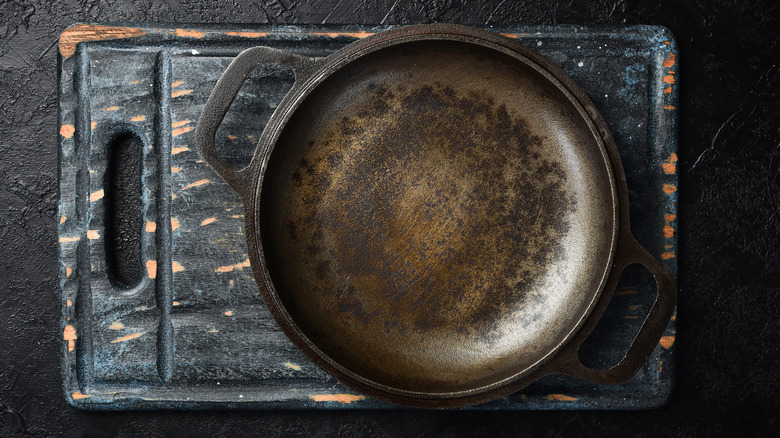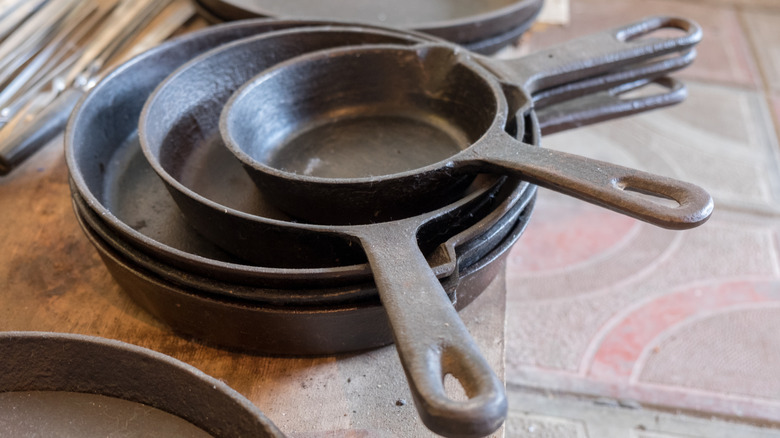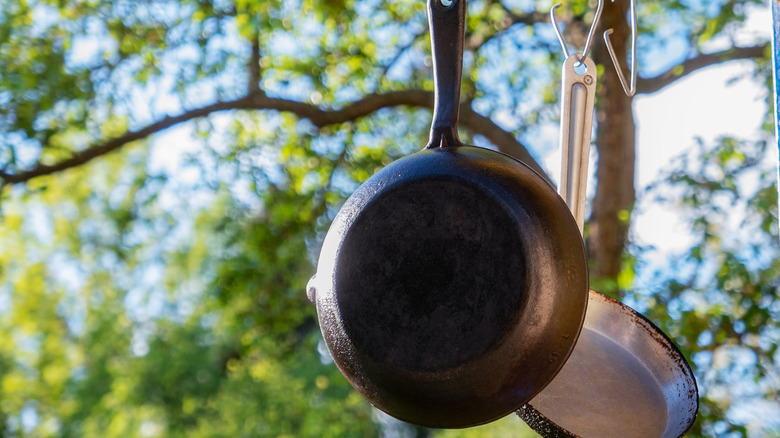Check For This Warning Sign Before Splurging On Vintage Cast Iron
A vintage cast iron pan is not only a cool collectible, but it's something you can get just as much use out of today as the original owner did, however many years ago. Well, as long as you pick a good pan, that is. Even the rustiest, dustiest pans may not come cheap these days, since sellers are well aware of their value. In order to get some insight into what to look for, The Takeout spoke with Leon Huang, the CEO of RapidDirect. Huang, whose company manufactures custom parts on demand — using a variety of materials, including metals — told us that cracks are a major red flag.
"A crack compromises the structural integrity of the cast iron," Huang clarified. Not only can it worsen as you use the pan, but Huang warned, "That crack can become a weak point where oils seep in, leading to uneven seasoning or even hidden buildup. In extreme cases, it could trap flammable residue that might carbonize and ignite under high temperatures."
How can you check for cracks in cast iron?
If you're shopping in a thrift store or antique mall and the cast iron pans on display are too dirty to inspect closely, your best bet may be to perform what's called a "ring test." This is done by holding the pan up by its handle and tapping it with something metal like a spoon or a knife. "A healthy cast iron piece will produce a clear, bell-like ring," said Leon Huang, adding, "A dull or 'thud' sound often indicates a crack." As he noted, though, the test works best if the iron is bare, since an enamel covering may mute the sound.
If you do buy a dirty pan and take it home, though, Huang pointed out, "A surface inspection becomes easier after removing debris." He suggested scrubbing the pan with a stiff brush or steel wool, although you can also clean cast iron with a ball of aluminum foil. Alternatively, club soda is surprisingly effective at bubbling away the gunk, while ketchup can help remove any rust. Once your pan is clean, Huang said you can shine a flashlight at an angle across the pan to look for fine cracks. You could also use your fingers to feel the pan's surface, since, according to Huang, "Cracks often feel like fine grooves or raised seams."
Other signs a cast iron pan should be avoided
Even if the vintage pan you have your eye on isn't cracked, there are a few other things you need to watch out for. "Warping is a red flag in cast iron, especially for flat-bottom pans," Leon Huang cautioned. It might be a manufacturing defect, or it could have happened when someone put the hot pan on a cold surface. The problem with trying to cook with such a pan, Huang said, is, "Warping can prevent oils from pooling correctly, lead to uneven heating, and over time, increase localized stress points that promote cracking."
You'll also want to pick a pan that's free of any pitting, deep corrosion, or obvious casting defects such as air pockets. If the pan looks like someone's hit it with a bench grinder, perhaps to remove a thick coating of rust, you're also going to want to avoid it. "A pan that's been over-sanded or has lost substantial wall thickness may no longer hold heat as designed," Huang explained. From his perspective, as an expert in materials and manufacturing, he told us, "The most valuable vintage pieces are those with clean, uniform grain structures and no signs of fracture propagation." It's a lot to consider, but sourcing pristine vintage cast iron is worth it — if only for the cutest chocolate chip skillet cookie.


